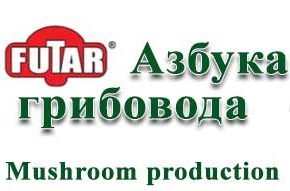Microclimate regimes in the incubation chamber
Microclimate in the incubation chamber
Microclimate regimes in the incubation chamber
What temperature should be maintained in the incubation chamber for the oyster mushrooms?
Temperature conditions during incubation should be observed not only in the room, but also have to be monitored in blocks:
The legend for temperature indicators:
T1- the air temperature in the room.
T2 – temperature at a substrate block surface (under a plastic film).
T3 – temperature inside a block (at the center).
Room air temperature (T1) is set by a technologist (21 to 24 ͦC). Why do we set such temperature regime? With the active development of mycelium a lot of biological heat is generated and there is a clear difference between the substrate ad air temperatures at the peak during incubation (day 5-7). For good mycelium growth in the substrate, temperature optimum lies within 24-30oC.
If the substrate blocks can heat to 31-32oС on their own, the temperature in the room should not exceed 21-22oC.
Throughout the incubation period the room temperature must be stable. This is ensured by a constant temperature of air mixture coming from the duct.
At all stages of mushroom cultivation stability of microclimatic conditions provides smooth respiration and evaporation levels, which, in turn, tunes mushroom block as an “independent living organism”.
Mycelium growth is possible only when the optimum level of water evaporation. Water is constantly moving from the center block to its surface. This is ensured by the uniform distribution bioheat distribution in every block:
T3> T2> T1
T3 = T1 + (T2-T1) + (T3-T2)
It is confirmed measuring the substrate temperature from its surface to the center of mushroom block every 1-1.5 cm. Only a “rod” of 2-3 cm in diameter inside a block heats up to 30-32oC, and the rest of the mushroom block volume remains within a temperature range optimal for mycelium growth (24-29oC). T3-T1 value does not exceed 8-10oC.
Attempts to reduce the temperature in the center of the block by lowering the room temperature lead to the cooling of substrate surface layer and slowing down or stopping evaporation. Evaporation is monitored using the temperature incubation charts.
Incubation graph is determined by temperature curves inside the block and on its surface (T-3 and T-2).
By providing a stable temperature parameters in a grow room, T2 curve divides -T1-T3 in half along the entire graph.
Analysis of temperature graphs T3 T2 T1 helps to track incubation cycle violations and timely prevent them.
Humidity conditions.
The mass of water evaporated.
Consuming the substrate, developing mycelium breathes, releasing carbon dioxide and water vapor. Thus, not only water evaporates providing humidity of the substrate, but also additional metabolic water is formed in the process of organic substances decomposition and fungal respiration.
During the incubation period 20% of dry substance is transformed into water. One block, weighing 13-15 kg loses about 1000g in the form of water. Ventilation should ensure the removal of additional water evaporated from substrate blocks.
Evaporation rate increases or decreases along with a change of relative humidity in the room.
In practice, at the start of incubation, 100% air recirculation mode, relative humidity readings in a chamber change after 4-5 days. The gradual heating of substrate blocks occurs, causing slow saturation of air, walls, ceilings, floors with water vapor. The evaporation rate increases at the time of peak temperatures. Assuming stable room temperature, after 4-5 days humidity readings will be optimal for the incubation of your blocks (e.g., 65-70%).
Maintaining these conditions during the next 5 days will help to keep the metabolic heat level on the surfaces and proper evaporation rate.
Humidity at the end of incubation (11-14 days) should be raise to 80-85%. This helps to keep the thermal energy balance of the block (T3> T2> T1) and receive optimal temperature parameters, substrate humidity in the perforated area for fruit formation.
Summarizing all mentioned above, it is necessary to highlight the main points:
Incubation is the most important stage of oyster mushroom cultivation.
Complex biochemical process of mycelium development depends on the conditions stability during the incubation period.
